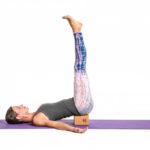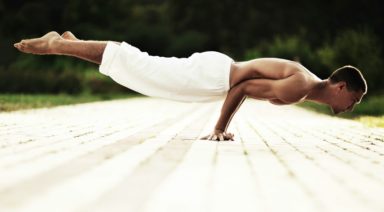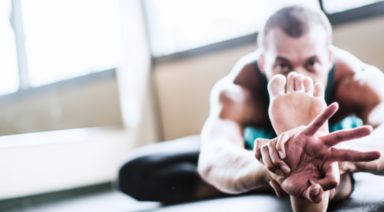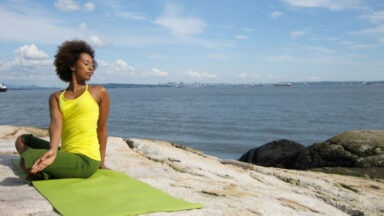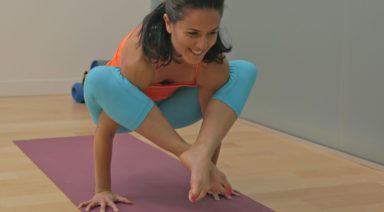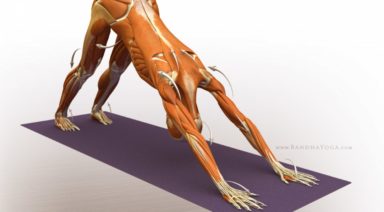Take Flight with Bakasana

Arm balances are one of the most exciting and challenging postures in the yoga practice. Some of the more easily accessible arm balances give students a sense of self-confidence and accomplishment from the practice. Having faith in yourself to continue the journey of yoga is part of the faith that it takes to devote yourself to the practice every day. An easier arm balance like Bakasana or Crane Posture, provides a safe forum for all students to experience their own inner strength.
When working on Bakasana take the time to set up the key alignment principles of the posture rather than just orienting towards what may appear to be the goal. The movement pattern that you program into your shoulders and core for a basic arm balance will be the foundation of all the other arm balances. Think about stabilizing the rotator cuff muscles while protracting the shoulder to create length and strength. Draw the elbows inward and do not allow them to splay outwards. If you absolutely must bend your arms keep the elbows aligned with the wrists or else your shoulders will be out of alignment. Firm the deltoids while connecting the push forward with arms into the power of latissimus dorsi underneath the wing tips of the shoulder blades. Draw the lower ribs in to active serratus anterior, the transverse abdominals and the internal obliques. Do not flatten your back. Instead curve the spine under into a tight spinal flexion, supported by the core muscles. Engage the pelvic floor and pull the heads of your femurs into their sockets to connect the activation of the legs with the tight network of strength in your torso. Gently grip your fingertips on the ground while maintaining contact of the base of your hand in order strengthen the wrist. Bakasana is a careful integration of the entire body, lifted inwards so that the power of your life force draws along the central axis of the body and is directed towards the center of gravity.
If you try to just “do” Bakasana without going step by step through the subtle energetics of the posture you may indeed balance on your arms, but you will miss the internal work that makes yoga transformational. On a more pragmatic level if you do not set up Bakasana from the inside out then you will be able to move deeper into Bakasana. For example, when the shoulder girdle and core are integrated in Bakasana you can jump into and out of the posture with grace and ease. Much more challenging variations like Eka Pada Bakasana A and B are only possible once you have the foundational keys of the healthy alignment firmly established. The goal of any posture is in fact the journey into the inner body. If you orient towards the external result and get overly attached to it you may sacrifice the internal essence of the posture. Perhaps true strength is setting your fully mind on a goal with complete non-attachment to ever really getting there.
Prasarita Padottanasana: Standing Wide-Legged Forward Bend Pose

ADJUSTMENTS | BENEFITS | SEQUENCING | SANSKRIT | STEPS
Prasarita padottanasana (pra-sa-REE-tah pah-doh-tahn-AHS-an-uh) is a big stretch for the hamstrings and inner leg line. With many variations available, this pose is accessible for most practitioners. This is also a great pose in lieu of headstand.
Philosophy + Origin
Prasarita padottanasana has found its way into almost every style of yoga. B.K.S. Iyengar taught several variations of this posture, labeling them as A, B, C, and D. The most commonly practiced variation is prasarita padottanasana A. Prasarita padottanasana B is when the hands are on the hips and the head is lifted off the ground, not resting on the mat. Prasarita padottanasana C is the variation where the hands are interlaced and stretched behind the back and over the head as you fold. In the final variation taught by Iyengar, prasarita padottanasana D asks the student to grasp the big toe on each foot.








